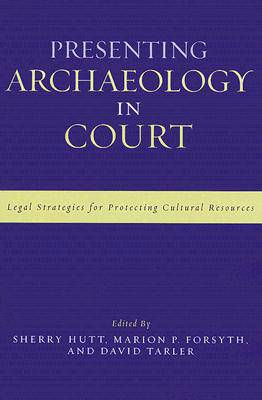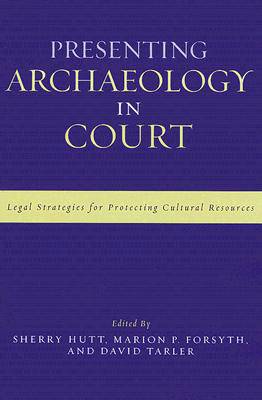
- Afhalen na 1 uur in een winkel met voorraad
- Gratis thuislevering in België vanaf € 30
- Ruim aanbod met 7 miljoen producten
- Afhalen na 1 uur in een winkel met voorraad
- Gratis thuislevering in België vanaf € 30
- Ruim aanbod met 7 miljoen producten
Zoeken
Presenting Archaeology in Court
A Guide to Legal Protection of Sites
€ 43,45
+ 86 punten
Omschrijving
The passage of the Archaeological Resources Protection Act (ARPA) in 1979 was a watershed moment in the movement to protect cultural objects against looting. This brief volume provides practical help to those who wish to use the provisions of ARPA_archaeologists, government land managers, preservation groups, and attorneys_to maximize its protective net. The distinguished group of authors, all veterans of ARPA enforcement efforts, first provides a comprehensive history of passage of the law and highlights some key cases that shaped its impact. Other chapters offer concrete instructions on establishing archaeological valuation and assessing damage to cultural sites. A final section provides a menu of legal strategies now available for use to strengthen and extend the provisions of the law. For cultural resource professionals working under ARPA's provisions, this book will be an invaluable, guide for daily practice.
Specificaties
Betrokkenen
- Uitgeverij:
Inhoud
- Aantal bladzijden:
- 224
- Taal:
- Engels
- Reeks:
Eigenschappen
- Productcode (EAN):
- 9780759109094
- Verschijningsdatum:
- 26/01/2006
- Uitvoering:
- Paperback
- Formaat:
- Trade paperback (VS)
- Afmetingen:
- 154 mm x 228 mm
- Gewicht:
- 412 g

Alleen bij Standaard Boekhandel
+ 86 punten op je klantenkaart van Standaard Boekhandel
Beoordelingen
We publiceren alleen reviews die voldoen aan de voorwaarden voor reviews. Bekijk onze voorwaarden voor reviews.










